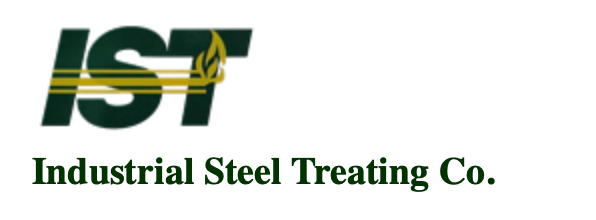Gas Carburizing
Industrial Steel Treating offers controlled atmosphere gas carburizing services. The carburizing process enhances parts with a hard, wear resistant surface, and a fully hardened martensitic core.
Desired part core hardness is designed by customer product engineers via material selection. Desired part case depths are designed by product engineers, and controlled by several heat treat process variables.
A part’s carburized surface is produced by diffusing carbon into the surface of the heated parts via carbon rich carrier gasses. IST carburizes in controlled atmosphere furnaces, where endothermic gas and natural gas supply nascent carbon to the surface of the heated parts. The four main carburizing process variables are temperature, time at temperature, carbon potential of the atmosphere gasses and part loading density.
Temperature control instrumentation continually reviews furnace temperatures and adjusts burner output appropriately. Time at temperature is controlled on continuous belt furnaces by establishing belt speeds, usually in inches per minute. In row-furnaces, time at temperature is described as “minutes per cycle”, in batch furnaces as “hours per event.”

Carbon potential, usually described as a percentage of carbon, is a measure of the furnace atmosphere’s capability to provide nascent carbon to the heated surface of the workpiece. It is controlled via oxygen sensing probes placed at designated locations within the furnace; the sensors provide feedback to a system which varies the input of natural gas and air to the furnace in order to balance the process gas appropriately, providing consistent heat treat results.
Part loading density is designed by IST. Each individual part number’s furnace loading is specified on work instructions; output is monitored and recorded from lot to lot. Belt furnace loading is defined as pounds per hour; batch and row furnace loading is defined as pounds per basket layer, the number of layers per basket, and, the number of baskets per load. Additionally, some parts may require stacking or racking in special or common fixtures that enable parts to be oriented relatively the same throughout the furnace load in order to achieve close tolerance dimensional results, or to minimize part contact during the heat treat process.
All of these variables, and others, are tightly controlled in order to achieve high Ppk and Cpk values from lot to lot.
After the designated carburized process, parts can be either slow cooled in atmosphere or quenched into furnace-integral, temperature controlled and agitation controlled oil baths. Slow cooling yields a carburized part that is not fully hardened. At this point, the part can be further machined before re-heating in an atmosphere furnace and quenched in oil, or selectively hardened via an induction process.
Quenching in oil after carburizing fully hardens the parts, and tempering is usually specified by the customer after quenching to relieve stresses in the part from the heat treat process, or to lower part surface and/or core hardness results.
IST’s metallurgical lab facility evaluates the case depth and hardness of each heat treat load, and certifies results.
Controlled Atmosphere Gas Carburizing Capabilities
Case Depth
Case Depth Range Capability
Part Length Range
Loading Methods
Facilities
Links
0.05mm - 6.5mm
0.05 mm Minimum
0.25 to 762 mm
Bulk Loading
Rack Loading
Batch – load size: 36″ x 72″ x 36″
Continuous Mesh Belt Systems
Data log heat treat attributes
Integral oil quench, or slow cool in protective atmosphere
Integral pre and post-washing systems
Integral tempering systems
Nine-position Continuous Row – load size 36″ x 36″ x 30″ high



